Creative Ways to Repurpose Sinks into Water Fountains
Have you ever gazed at an old sink and thought, “What on earth can I do with this?” Well, I’m here to tell you that your old sink can become a mesmerizing water fountain that transforms your space into a serene oasis! Imagine the gentle sound of water cascading, the visual appeal of a unique feature, and the way it can draw people in. Repurposing sinks into water fountains is not just a creative outlet; it’s a fantastic way to add charm and tranquility to both indoor and outdoor environments. Whether you have a vintage farmhouse sink or a sleek modern basin, there are countless ways to breathe new life into these forgotten treasures. So, let’s dive into the exciting world of sink fountains and explore how you can turn your old plumbing into a stunning centerpiece!
Selecting the appropriate sink is crucial for your fountain project. You’ll want to consider factors like size, material, and design to ensure it complements your space while providing both functionality and aesthetic appeal. A larger sink can make a bold statement in your garden, while a smaller one might be perfect for a cozy patio nook. Think about the material too; ceramic, stainless steel, and copper all offer different vibes. For example, a rustic ceramic sink can create a charming cottage feel, while a sleek stainless steel sink can add a modern touch. Don’t forget to consider the depth of the sink! A deeper basin can hold more water and create a more pronounced fountain effect, while a shallower sink might be more suited for a gentle trickle.
Before jumping into your project, it's essential to gather all the necessary tools and materials. This will ensure a smooth repurposing process and save you from those frustrating trips to the hardware store mid-project. Here’s a quick rundown of what you might need:
- Basic Tools: Screwdriver, wrench, drill, and saw.
- Plumbing Supplies: Pipes, connectors, and valves.
- Water Pump: Essential for circulating water.
- Waterproofing Materials: Sealants and liners to prevent leaks.
Having these tools and materials on hand will not only make your life easier but also allow you to focus on the fun part—getting creative with your fountain design!
Understanding the plumbing supplies required for your sink fountain is vital. You’ll need a reliable water pump to get the water flowing, hoses to transport the water, and connectors to ensure everything fits together snugly. The pump is the heart of your fountain; it circulates the water, creating that soothing sound we all love. Make sure to choose a pump that matches the size of your fountain. A pump that's too powerful can cause splashing, while one that’s too weak may not provide enough flow. Additionally, don’t forget about the hoses! They come in various lengths and diameters, so select ones that fit your design and layout.
Choosing the right water pump is critical for your fountain's operation. When selecting a pump, consider factors such as flow rate and energy efficiency. The flow rate is usually measured in gallons per hour (GPH) and should match the size of your sink. For instance, if you’re using a larger sink, you’ll want a pump with a higher GPH to ensure a beautiful, flowing fountain. Energy efficiency is also important; look for pumps that are designed to consume less electricity while still delivering powerful performance. This not only saves you money on your energy bills but is also better for the environment!
Proper waterproofing is essential to prevent leaks and damage. You wouldn’t want your beautiful fountain to turn into a muddy puddle! Various methods and materials can effectively seal your fountain, ensuring longevity and durability. One popular method is to use a waterproof sealant around the edges of the sink and any joints where water may escape. Additionally, consider using a pond liner if your fountain design includes a larger reservoir. This will provide an extra layer of protection against leaks. Remember, a little bit of preparation goes a long way in ensuring your fountain remains a stunning feature for years to come!
Now that you have the essentials down, let’s get inspired! There are countless creative design ideas that can transform your sink into a stunning fountain. From rustic to modern styles, the possibilities are endless. For instance, you could create a charming garden fountain by placing your sink atop a stack of stones, allowing the water to trickle down. Alternatively, for a sleek modern look, consider mounting your sink on a wooden pedestal with LED lights illuminating the water. The beauty of repurposing sinks is that you can tailor your design to fit your personal style and the vibe of your space.
Regular maintenance is key to keeping your fountain in top condition. Just like any other feature in your home or garden, your sink fountain requires a bit of TLC to ensure it remains functional and beautiful. Learn essential tips for cleaning, troubleshooting, and maintaining your repurposed sink fountain for years of enjoyment. A little effort goes a long way in preserving the charm and tranquility your fountain brings to your space.
Cleaning your fountain is necessary to prevent algae growth and maintain aesthetic appeal. Over time, dirt and debris can accumulate, detracting from the beauty of your water feature. A simple step-by-step guide to effectively clean and care for your water feature includes:
- Turn off the pump and drain the water.
- Remove any debris or leaves from the sink.
- Use a soft brush and mild soap to scrub the surfaces.
- Rinse thoroughly and refill with fresh water.
- Restart the pump and enjoy your sparkling clean fountain!
If you live in a cold climate, winterizing your fountain is crucial to avoid damage. The freezing temperatures can wreak havoc on your plumbing and fountain structure. To properly prepare your fountain for winter months, follow these steps:
- Drain all water from the sink and plumbing.
- Remove the pump and store it indoors.
- Cover the fountain with a protective tarp to shield it from snow and ice.
By taking these precautions, you’ll ensure that your repurposed sink fountain remains in excellent condition, ready to delight you come spring!
Q: Can I use any type of sink for a fountain?
A: While you can use various types of sinks, it's best to choose one that is durable and can withstand outdoor elements if placed outside. Materials like stainless steel, ceramic, and stone work well.
Q: How much maintenance does a sink fountain require?
A: Maintenance can be minimal if you clean it regularly and check the pump. A good cleaning every few weeks and proper winterization will keep it looking great.
Q: Is it difficult to install a water pump?
A: Installing a water pump can be straightforward with the right tools and instructions. Many pumps come with clear guidelines to help you set them up easily.
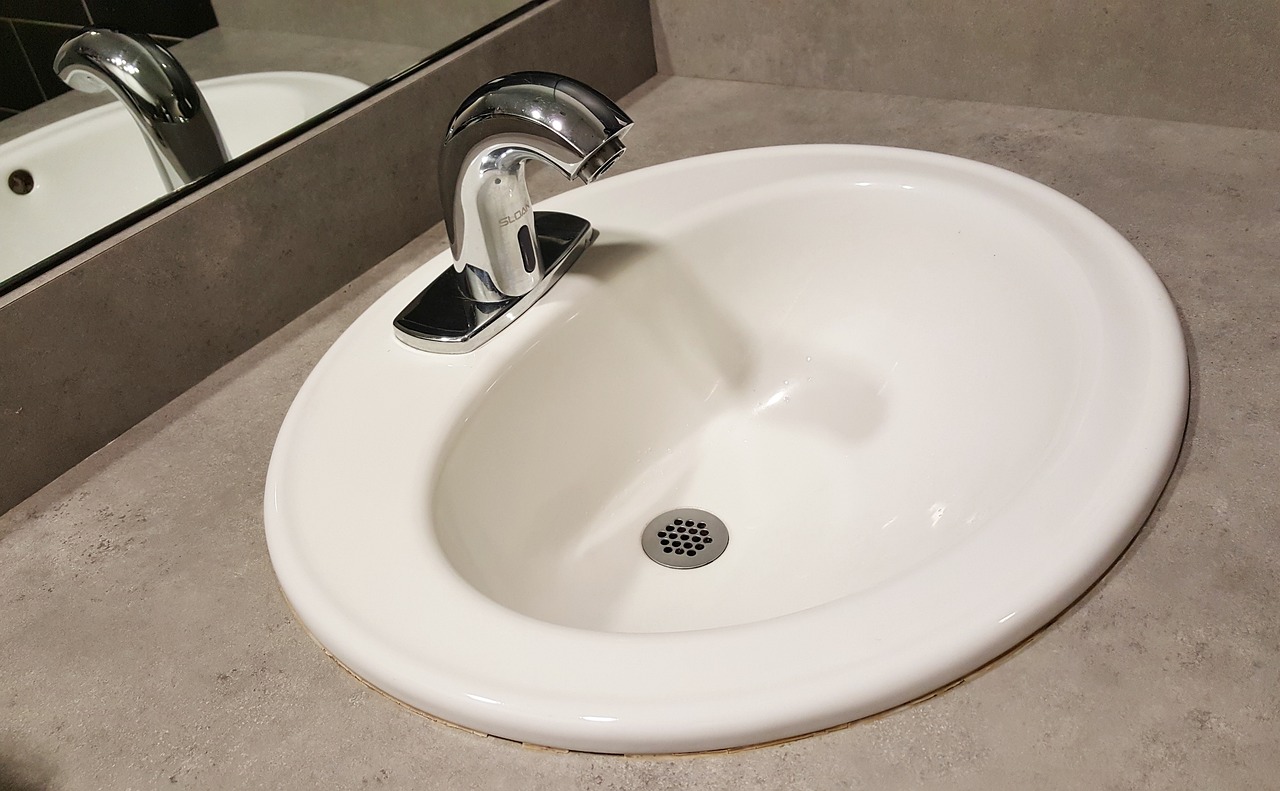
Choosing the Right Sink
When it comes to transforming an old sink into a stunning water fountain, the first and perhaps most crucial step is . Not all sinks are created equal, and the one you select will significantly impact the overall aesthetic and functionality of your fountain. You need to consider several factors, including size, material, and design, to ensure that your fountain complements your space while also being practical.
First off, let’s talk about size. The dimensions of your sink should align with the area where you plan to install the fountain. A large, bulky sink might overwhelm a small garden nook, while a tiny sink could get lost in a spacious backyard. Measure your space carefully and visualize how the sink will fit into the environment. It’s like finding the perfect piece of furniture for your living room; it should enhance the space rather than detract from it.
Next, consider the material of the sink. Common materials include stainless steel, porcelain, and stone. Each comes with its own set of advantages and disadvantages. For instance, stainless steel is durable and easy to clean, making it an excellent choice for outdoor fountains. On the other hand, a porcelain sink adds a touch of elegance and can be painted or decorated to match your garden theme. Think about the climate in your area as well; materials like stone can withstand harsh weather, while others might not fare as well.
The design of the sink is another vital aspect. Are you leaning towards a rustic, vintage look, or do you prefer something sleek and modern? The design should reflect your personal style and harmonize with the surrounding decor. For example, if your garden features a lot of natural elements, an antique farmhouse sink might be the perfect fit. Conversely, if you have a contemporary outdoor space, a minimalist, geometric sink could be more suitable. Remember, it’s all about creating a cohesive look that brings tranquility and charm to your environment.
To help you visualize the options, here’s a simple table comparing different sink materials and their characteristics:
| Material | Durability | Maintenance | Aesthetic |
|---|---|---|---|
| Stainless Steel | High | Low | Modern |
| Porcelain | Medium | Medium | Elegant |
| Stone | Very High | Medium | Natural |
In conclusion, choosing the right sink for your water fountain project involves a thoughtful consideration of size, material, and design. Take your time to explore different options, and don’t hesitate to get creative! After all, this is your chance to turn a simple sink into a captivating water feature that enhances your space and brings a sense of tranquility. So, what are you waiting for? Dive into the world of possibilities and let your imagination flow!
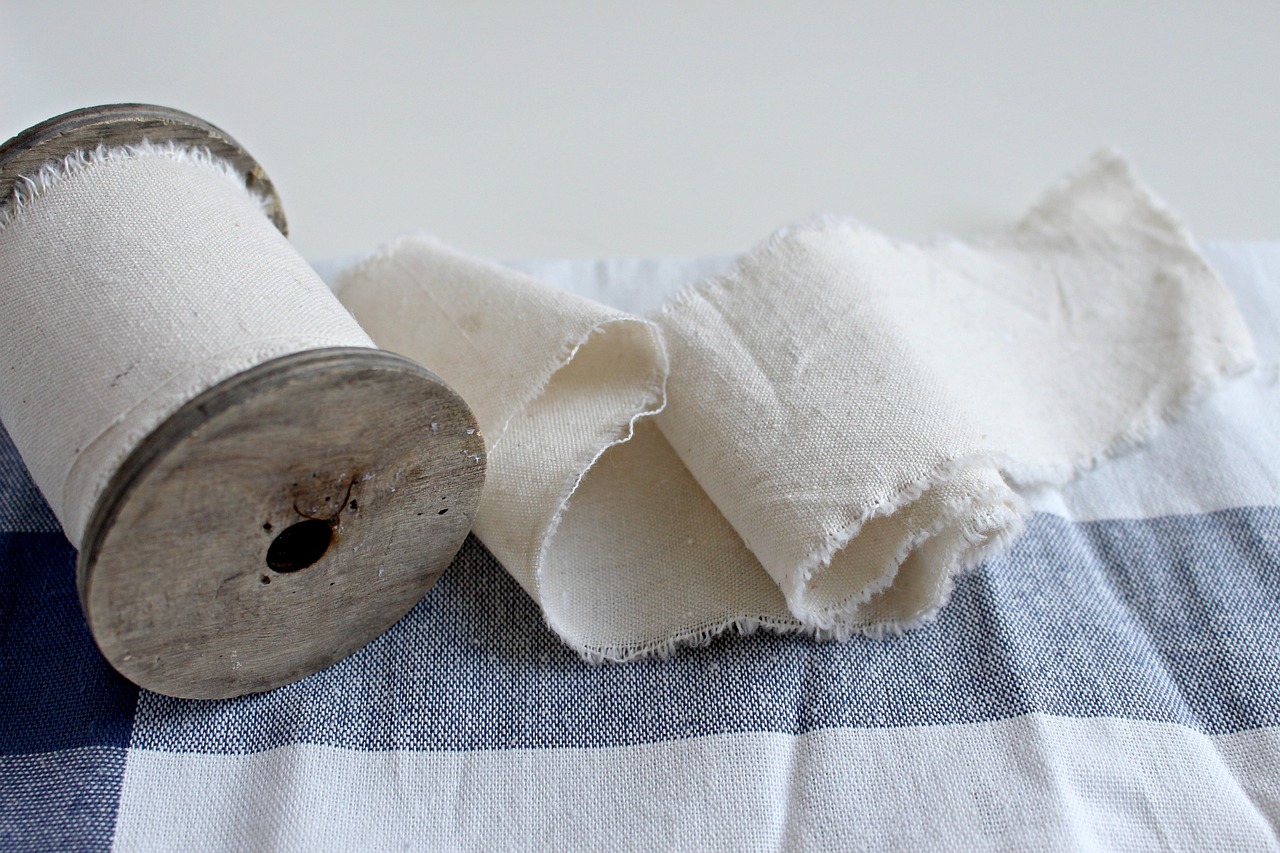
Essential Tools and Materials
Before diving into the exciting world of transforming your old sink into a stunning water fountain, it's essential to gather all the necessary tools and materials. Having everything on hand not only streamlines the process but also ensures that you can tackle any unexpected challenges that arise during the project. Think of it like preparing for a big adventure; you wouldn’t want to head out without the right gear, right?
First and foremost, you’ll need some basic tools. These typically include a drill, screwdriver, wrench, and a level. These tools will help you with the assembly and installation of your fountain. Additionally, having a measuring tape handy is crucial for ensuring that everything fits perfectly in your chosen space. Nobody wants a fountain that’s too big or too small for the area!
Next, let’s talk about the plumbing supplies. This is where things get a bit more technical. You’ll need a water pump to circulate the water, along with hoses and connectors to link everything together. It’s like building a small water highway, and each piece plays a vital role in making sure the water flows smoothly. If you’re unsure about what pump to choose, don't worry! We’ll cover that in more detail in the next section.
In addition to the plumbing supplies, it’s important to consider waterproofing materials. You don’t want your beautiful fountain turning into a soggy mess! Look for sealants and waterproof coatings that will help protect your fountain from leaks and moisture damage. This is especially important if you plan to place your fountain outdoors, where it will be exposed to the elements.
Here’s a quick overview of the essential tools and materials you’ll need:
| Item | Purpose |
|---|---|
| Drill | For making holes and securing parts |
| Screwdriver | For assembling components |
| Wrench | For tightening fittings |
| Water Pump | To circulate water |
| Hoses & Connectors | To connect the pump and fountain |
| Sealants | To waterproof the fountain |
Once you have all your tools and materials ready, you’re well on your way to creating a beautiful fountain that will enhance your space. Just remember, each step of the process is an opportunity to get creative and make something uniquely yours. So, roll up your sleeves, put on your DIY hat, and let’s get started!
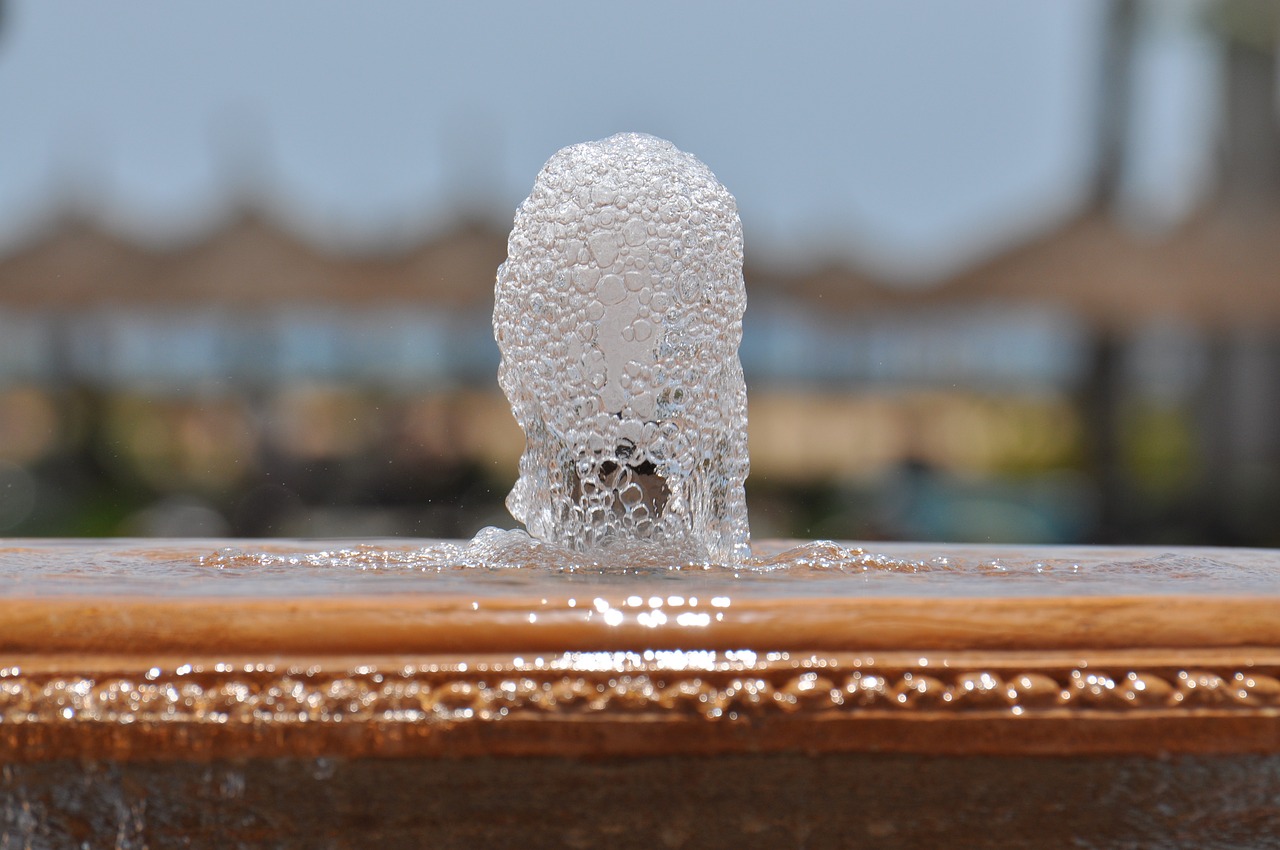
Basic Plumbing Supplies
When embarking on your journey to transform an old sink into a stunning water fountain, having the right plumbing supplies is absolutely essential. Think of plumbing supplies as the backbone of your project; without them, your vision may quickly turn into a soggy mess instead of a serene oasis. So, what exactly do you need? Let's dive into the must-have items that will help you create a fountain that not only looks great but also functions flawlessly.
First and foremost, you'll need a water pump. This is the heart of your fountain, responsible for circulating water and creating that soothing sound we all love. When selecting a pump, consider factors such as the flow rate and energy efficiency. A pump that’s too weak won’t provide the desired flow, while one that’s too powerful can create a chaotic splash zone. Aim for a pump that matches the size of your sink and the overall design of your fountain.
Next up, you'll want to gather hoses and connectors. Hoses will transport the water from the pump to the fountain's spout, while connectors ensure that everything fits together snugly. It's crucial to choose hoses that are durable and flexible enough to navigate any bends or curves in your design. Look for connectors that are easy to install and compatible with your chosen pump.
Another important item on your list should be a water reservoir. Depending on your fountain design, the sink itself may serve as the reservoir, but you might also need to create a hidden basin beneath it to hold additional water. This is particularly useful if you're designing a larger fountain that requires more water to function efficiently. Make sure the reservoir is watertight to prevent any leaks.
Lastly, don’t forget about some essential sealants and waterproofing materials to ensure that your fountain remains leak-free. Proper sealing will not only protect your space from water damage but also prolong the life of your fountain. Consider using silicone sealants or waterproof paint, especially if your fountain will be exposed to outdoor elements.
Here’s a quick overview of the basic plumbing supplies you’ll need:
| Item | Purpose |
|---|---|
| Water Pump | Circulates water through the fountain |
| Hoses | Transports water from the pump |
| Connectors | Joins hoses and pump components |
| Water Reservoir | Holds water for circulation |
| Sealants | Prevents leaks and ensures durability |
In summary, having the right basic plumbing supplies is vital for a successful sink-to-fountain transformation. Each component plays a crucial role in ensuring your fountain operates smoothly and looks fantastic. So, as you gather your materials, remember: a well-prepared project is half the battle won!
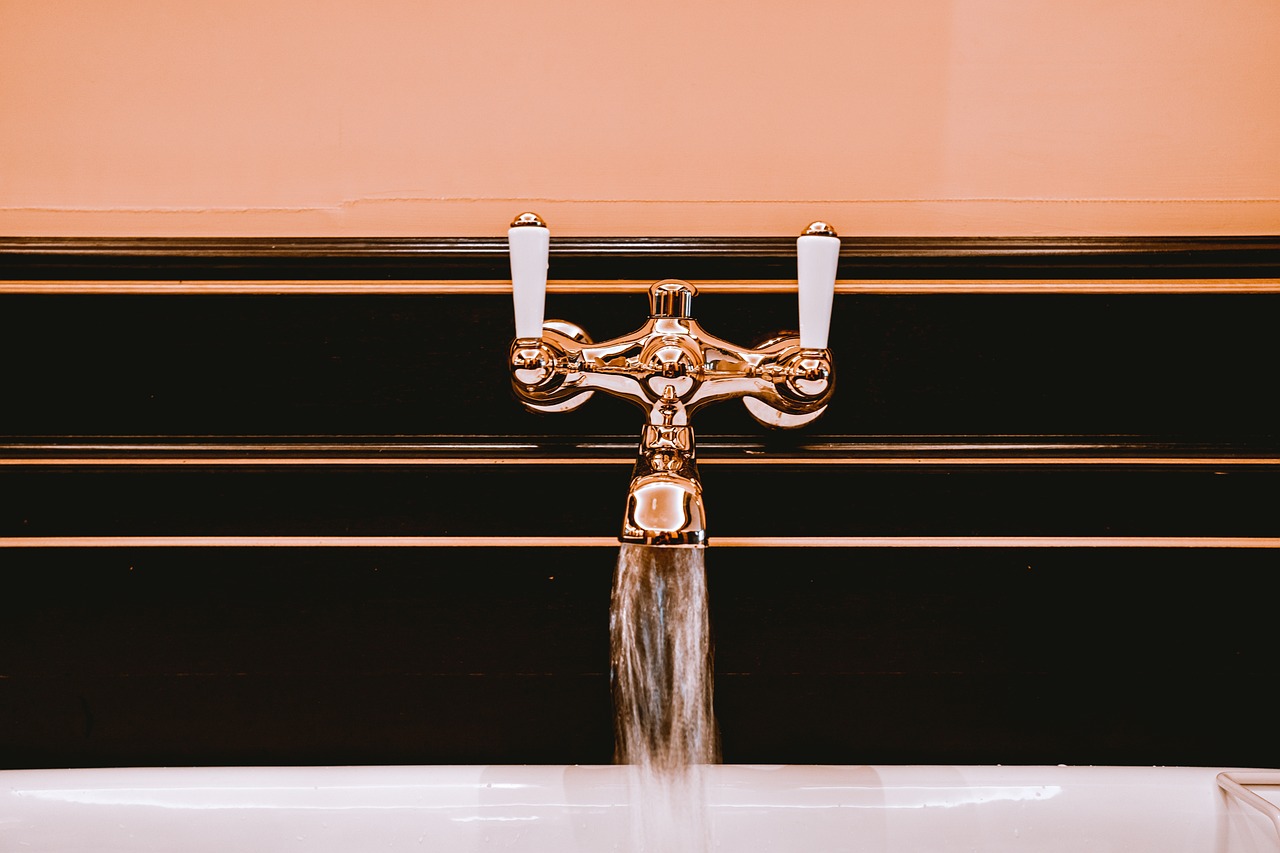
Selecting a Water Pump
When it comes to transforming your old sink into a stunning water fountain, one of the most critical components you'll need to consider is the water pump. The right pump not only ensures that your fountain operates smoothly but also enhances its aesthetic appeal. So, what should you look for when selecting a water pump for your project? Let's dive into the essential factors!
First and foremost, you'll want to consider the flow rate. This refers to how much water the pump can move in a given time, usually measured in gallons per hour (GPH). The flow rate you need will depend on the size of your sink and the desired water feature effect. For example, if you're aiming for a gentle trickle, a pump with a lower GPH will suffice. However, for a more dramatic waterfall effect, you'll need a pump with a higher flow rate. It's a bit like choosing the right-sized engine for a car; too small, and it won’t deliver the performance you want, too big, and it might be overkill!
Another vital aspect to consider is energy efficiency. Look for pumps that are designed to consume less electricity while providing the same or better performance. An energy-efficient pump not only saves you money on your utility bills but also contributes to a more sustainable environment. You wouldn’t want your beautiful fountain to become a burden on your wallet, right?
Moreover, think about the noise level of the pump. Some pumps can be surprisingly loud, which might detract from the tranquil ambiance you’re trying to create. If you're aiming for a peaceful retreat in your backyard or a serene indoor atmosphere, look for pumps that are specifically designed to operate quietly. After all, who wants to listen to a noisy motor when they could be enjoying the soothing sounds of flowing water?
Lastly, it’s essential to consider the size and design of the pump. Make sure it fits comfortably within your sink and complements its overall look. A pump that’s too large can be an eyesore, while one that's too small may not function effectively. Always check the product specifications and, if possible, consult with a professional to ensure you’re making the right choice.
In summary, selecting the right water pump involves understanding your specific needs and preferences. By focusing on flow rate, energy efficiency, noise level, and size, you can find a pump that not only meets your functional requirements but also enhances the beauty of your repurposed sink fountain. So go ahead, take the plunge, and choose wisely!
- What is the best type of pump for a fountain? The best type of pump depends on your fountain's size and desired flow rate. Generally, submersible pumps are popular for small to medium fountains.
- How do I maintain my water pump? Regularly check for debris and clean the pump as needed. Ensure that the water level is adequate to prevent the pump from running dry.
- Can I use a solar pump for my fountain? Yes, solar pumps can be a great eco-friendly option, especially for outdoor fountains that receive plenty of sunlight.

Waterproofing Techniques
When it comes to transforming your old sink into a stunning water fountain, one of the most crucial steps is ensuring that it is properly waterproofed. After all, the last thing you want is for your beautiful creation to turn into a leaky mess! There are several effective techniques and materials you can use to achieve a watertight seal, ensuring your fountain remains a source of joy rather than frustration.
First and foremost, consider using a high-quality waterproof sealant. This can be applied to the joints and seams of your sink where water might escape. Look for sealants specifically designed for outdoor use, as they offer superior durability against the elements. Applying the sealant is relatively straightforward—just clean the area thoroughly, apply the sealant generously, and allow it to cure as per the manufacturer's instructions. This simple step can save you from potential leaks down the road.
Another effective method is to use a waterproof liner. If your sink has any cracks or porous areas, a liner can provide an additional layer of protection. You can purchase pre-made liners or create a custom fit using materials like EPDM rubber. This not only prevents leaks but also adds an extra touch of insulation, which is particularly helpful in colder climates.
Don't overlook the importance of proper drainage. Ensure that your fountain has a designated drainage system to handle excess water. This can be as simple as installing a small drain at the bottom of the sink or utilizing a pump with an overflow feature. By managing excess water, you reduce the risk of pooling and potential leaks, keeping your fountain functioning smoothly.
Lastly, regular maintenance and inspections are key to keeping your waterproofing intact. Check for any signs of wear and tear, and address any issues promptly. If you notice any cracks or peeling sealant, don’t hesitate to reapply your sealant or replace your liner. By staying proactive, you can enjoy your repurposed sink fountain for years to come without the worry of leaks.
In summary, waterproofing your sink fountain is an essential step that involves using quality sealants, liners, and ensuring proper drainage. By following these techniques, you can create a beautiful and functional water feature that enhances your space without the headache of leaks.
- What type of sealant is best for waterproofing a sink fountain? Look for a high-quality silicone or polyurethane sealant that is specifically designed for outdoor use.
- Can I use regular paint to waterproof my fountain? No, regular paint is not designed to withstand constant exposure to water and will not provide a reliable seal.
- How often should I check my fountain for leaks? It’s a good idea to inspect your fountain at least once a season, especially after heavy rain or winter thaw.
- What should I do if I find a leak? Address it immediately by applying more sealant or replacing the liner, depending on the severity of the leak.
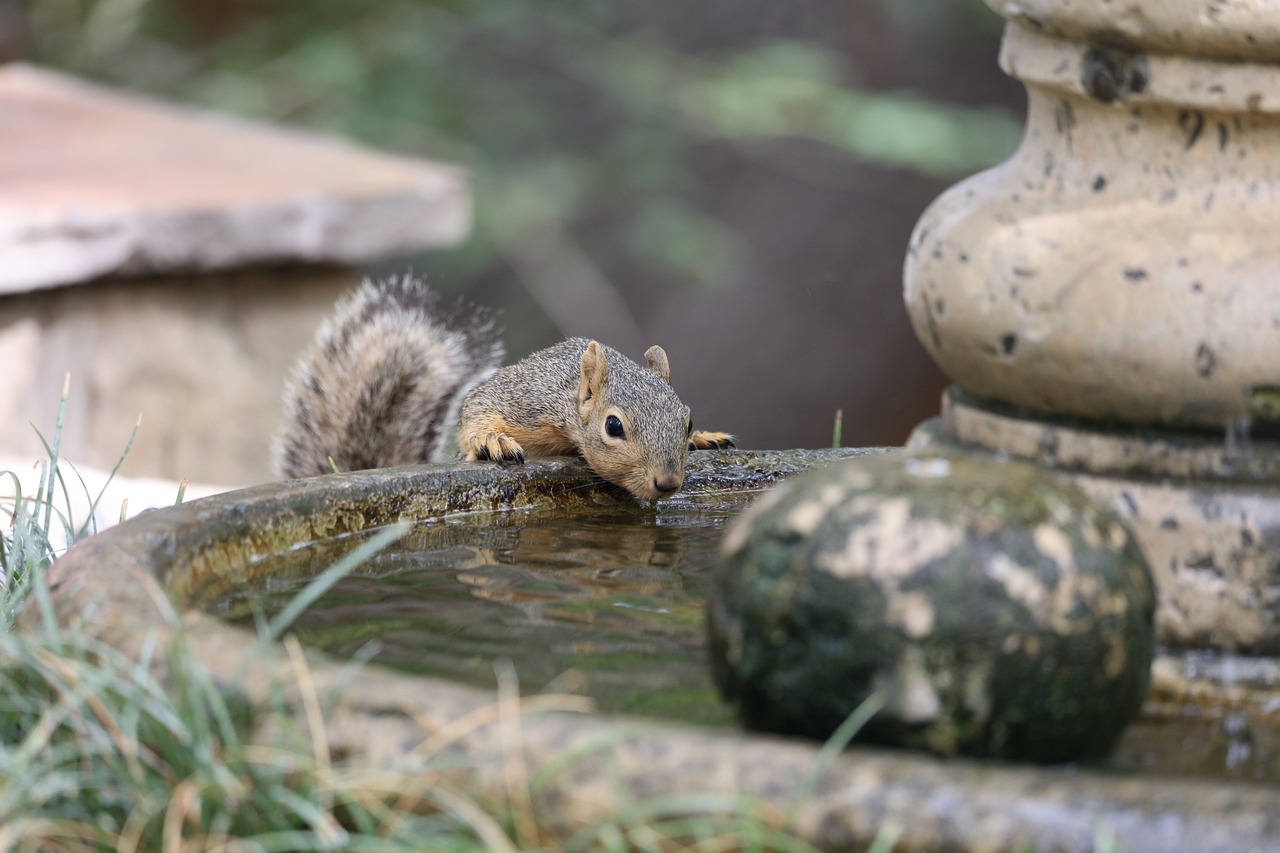
Design Ideas for Your Fountain
This article explores innovative and practical ideas for transforming old sinks into beautiful water fountains that enhance outdoor and indoor spaces, adding charm and tranquility to any environment.
Selecting the appropriate sink is crucial for your fountain project. Consider size, material, and design to ensure it complements your space while providing functionality and aesthetic appeal.
Before starting your project, gather the necessary tools and materials. This section outlines everything you'll need, from basic tools to plumbing supplies, ensuring a smooth repurposing process.
Understanding the plumbing supplies required for your sink fountain is vital. This includes pumps, hoses, and connectors, which are essential for creating a functional water feature.
Choosing the right water pump is critical for your fountain's operation. This subsection discusses factors to consider, such as flow rate and energy efficiency, to ensure optimal performance.
Proper waterproofing is essential to prevent leaks and damage. Here, we explore various methods and materials to effectively seal your fountain, ensuring longevity and durability.
When it comes to designing your repurposed sink fountain, the possibilities are as vast as your imagination. One popular approach is to create a rustic garden fountain. Imagine an old farmhouse sink, with its charming patina, nestled among vibrant flowers and lush greenery. You can enhance this look by adding natural stones around the base or even incorporating a small rock waterfall feature that flows into the sink. This not only adds a touch of nature but also creates a soothing sound that can transport you to a serene retreat right in your backyard.
If you're leaning towards a more modern aesthetic, consider using a sleek stainless steel sink. Pair it with a minimalist design by placing it on a simple pedestal or mounting it on a wall. Add LED lighting beneath the water surface to create a stunning visual effect at night. This combination of clean lines and reflective surfaces can make your fountain a striking centerpiece in any contemporary space.
Another exciting idea is to incorporate themed elements into your fountain design. For example, if you love nautical themes, an old sink can be transformed into a charming shipwreck fountain. Decorate the sink with seashells, driftwood, and marine plants. A small water pump can create gentle waves, mimicking the ocean's ebb and flow, bringing a piece of the seaside to your home.
For those who appreciate a touch of whimsy, consider a fairy garden fountain. Use a colorful, vintage sink and surround it with miniature fairy houses, tiny figurines, and delicate plants. You could even add a few solar-powered fairy lights for a magical glow at dusk. This enchanting design not only attracts attention but also invites the imagination to wander.
Lastly, don't forget about the potential for vertical fountains. If space is limited, you can mount an old sink on a fence or wall, allowing water to cascade down into a basin below. This vertical design not only saves space but also creates a stunning visual impact, especially when adorned with climbing plants or hanging flowers.
As you brainstorm your design ideas, remember that the key to a successful fountain is ensuring it reflects your personal style while harmonizing with your surroundings. Whether you opt for a rustic, modern, themed, or whimsical design, the beauty of repurposing sinks into fountains lies in the unique charm they bring to your space.
Regular maintenance is key to keeping your fountain in top condition. Learn essential tips for cleaning, troubleshooting, and maintaining your repurposed sink fountain for years of enjoyment.
Cleaning your fountain is necessary to prevent algae growth and maintain aesthetic appeal. This subsection provides a step-by-step guide to effectively clean and care for your water feature.
If you live in a cold climate, winterizing your fountain is crucial to avoid damage. Here, we discuss the steps to properly prepare your fountain for winter months.
- Can I use any type of sink for my fountain? Yes, almost any sink can be repurposed into a fountain, but consider the size, material, and design to fit your space.
- How do I ensure my fountain doesn't leak? Proper waterproofing techniques, such as using sealants and checking connections, can help prevent leaks.
- What maintenance do I need to perform on my fountain? Regular cleaning to remove algae and checking the pump and plumbing are essential for longevity.
- Can I use a solar pump for my fountain? Absolutely! Solar pumps are a great eco-friendly option for powering your fountain.
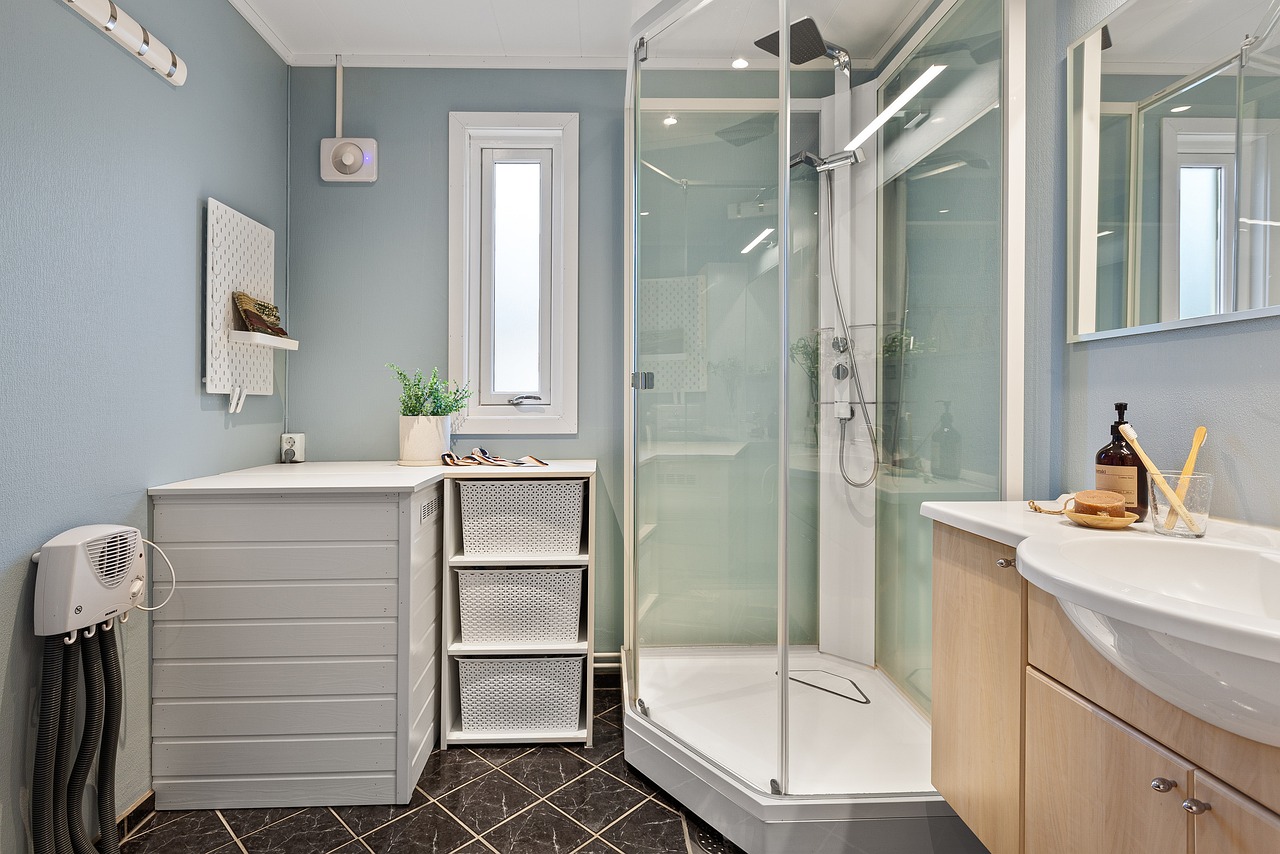
Maintenance Tips for Longevity
When it comes to enjoying your repurposed sink fountain, regular maintenance is the golden rule. Just like a car needs oil changes, your fountain requires a bit of love to keep it running smoothly and looking fabulous. Think of your fountain as a living piece of art that needs care to maintain its beauty and functionality. It’s not just about aesthetics; proper upkeep ensures that your fountain lasts for years to come, giving you the soothing sound of flowing water and the visual appeal that enhances your space.
First and foremost, cleaning your fountain is essential. Over time, debris like leaves, dirt, and even algae can accumulate, creating an unsightly mess and potentially clogging the pump. To keep your fountain sparkling, make it a habit to check it weekly. A simple rinse with water and a gentle scrub with a soft brush can work wonders. For a deeper clean, consider using a mixture of vinegar and water to break down any stubborn algae. Just be sure to rinse thoroughly afterward to avoid any residue.
Another aspect of maintenance involves monitoring the water level. If your fountain runs dry, it can lead to pump damage. A good rule of thumb is to check the water level every few days, especially during hot weather when evaporation occurs more rapidly. To make this task easier, you might want to set a reminder on your phone or even use a float valve to maintain consistent water levels automatically.
Now, let’s talk about winterizing your fountain if you live in a colder climate. It’s crucial to prepare your fountain for winter to prevent any damage from freezing temperatures. Start by draining the water completely, as standing water can freeze and crack your sink. After draining, clean the fountain thoroughly and store any removable parts indoors. If your fountain is too large to move, consider insulating it with a tarp or bubble wrap to protect it from the elements. This preparation will save you from costly repairs come spring.
Lastly, don’t forget to check the pump and plumbing regularly. A quick inspection can help catch any issues before they escalate. Look for leaks, listen for unusual sounds from the pump, and ensure that all connections are secure. If you notice any problems, address them promptly to avoid further damage. Keeping a maintenance log can be beneficial, helping you track when you last performed certain tasks and making it easier to stay on top of your fountain’s needs.
To help you navigate the world of fountain maintenance, here are some common questions that many fountain enthusiasts have:
- How often should I clean my fountain? - Ideally, you should clean your fountain every week to prevent algae buildup and keep it looking pristine.
- What should I do if my pump stops working? - First, check if the pump is clogged or if there’s an issue with the power supply. Cleaning the pump and ensuring it’s connected properly often resolves the issue.
- Can I leave my fountain running during winter? - It’s not advisable to leave your fountain running in freezing temperatures, as this can cause damage. Properly winterizing it is essential.
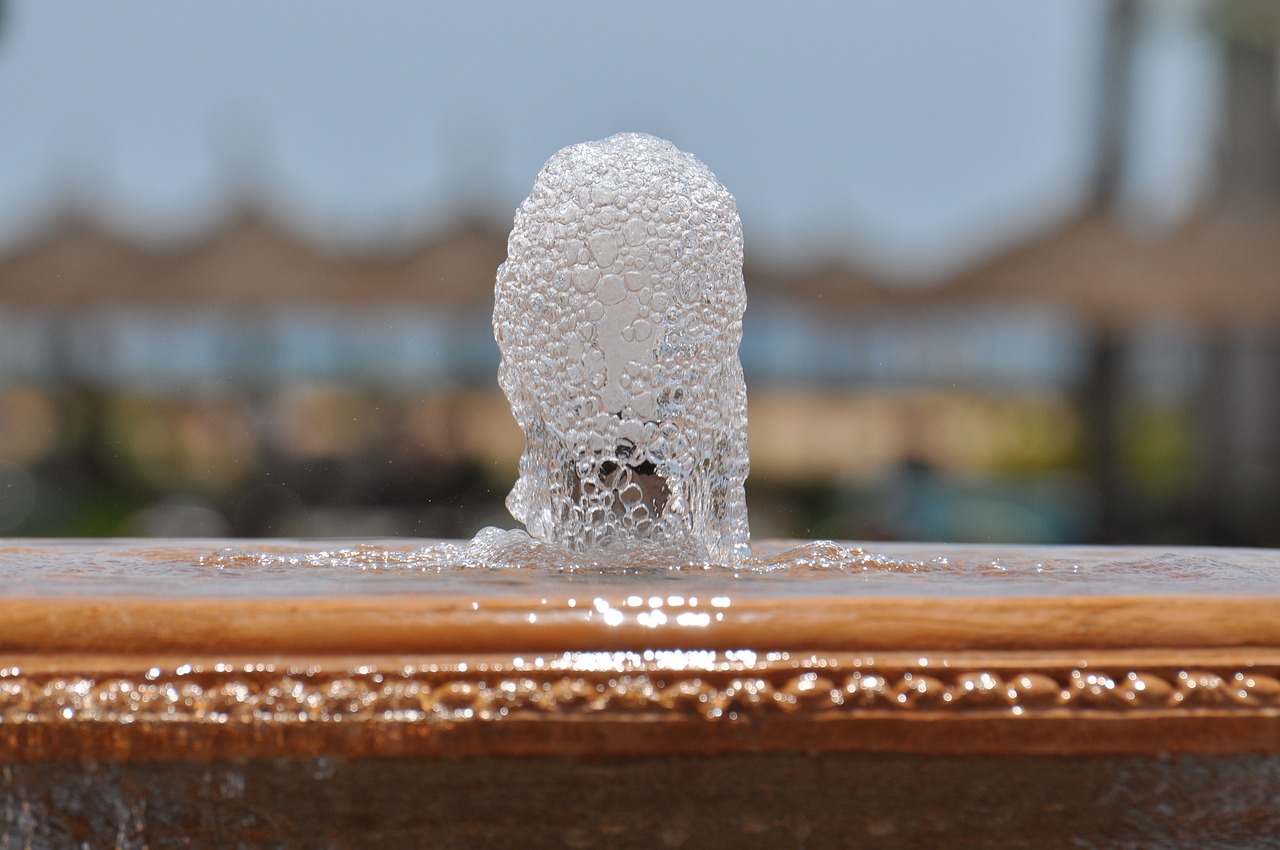
Cleaning Your Fountain
Keeping your repurposed sink fountain clean is not just about aesthetics; it's crucial for the health of the water feature and the enjoyment it brings. Over time, fountains can accumulate dirt, algae, and debris, which can hinder the flow of water and detract from the beauty of your installation. So, how do you keep your fountain looking fresh and inviting? Let's dive into some effective cleaning strategies!
First and foremost, it's important to establish a regular cleaning routine. Depending on your fountain's exposure to sunlight and debris, you may want to clean it every couple of weeks or at least once a month. Start by turning off the pump and draining the water. This is your opportunity to assess the condition of the fountain and identify any areas that need extra attention.
Next, use a soft brush or sponge to scrub the surfaces of the sink and any decorative elements. If you notice stubborn stains or algae buildup, a mixture of vinegar and water can work wonders. Just mix equal parts of vinegar and water in a spray bottle, apply it to the affected areas, and let it sit for a few minutes before scrubbing. This natural solution is not only effective but also environmentally friendly!
For the pump and plumbing components, it's essential to clean them separately. Remove the pump and rinse it thoroughly with clean water to eliminate any debris that may have collected inside. You can also soak it in a vinegar solution to help break down any mineral deposits. Be sure to check the hoses and connectors for clogs or blockages, as these can impede water flow and affect the fountain's performance.
After cleaning, rinse everything thoroughly to ensure that no cleaning solution remains, as it could harm any plants or wildlife that may come into contact with the water. Once everything is clean and rinsed, reassemble the fountain, refill it with fresh water, and turn the pump back on. Watch as your fountain comes to life again, sparkling and inviting!
To help you maintain your fountain, consider keeping a cleaning schedule or a checklist. Here's a simple table to get you started:
| Task | Frequency |
|---|---|
| Drain and clean the fountain | Every 2-4 weeks |
| Check and clean the pump | Monthly |
| Inspect for algae or debris | Weekly |
| Change the water | Every 2 weeks |
By following these cleaning tips and maintaining a regular schedule, your sink fountain will remain a stunning focal point in your home or garden, providing a serene atmosphere for years to come.
Q: How often should I clean my fountain?
A: It's recommended to clean your fountain every 2-4 weeks, depending on its exposure to sunlight and debris.
Q: Can I use chemicals to clean my fountain?
A: While some chemicals can be effective, it's best to use natural solutions like vinegar and water to avoid harming plants or wildlife.
Q: What should I do if I notice algae growth?
A: If you see algae, drain the fountain, scrub the affected areas with a vinegar solution, and rinse thoroughly before refilling.
Q: Is it necessary to winterize my fountain?
A: Yes, if you live in a cold climate, winterizing your fountain is crucial to prevent damage from freezing temperatures.

Winterizing Your Fountain
As the colder months approach, it's essential to think about how to protect your beautiful sink fountain from the harsh winter weather. Just like you wouldn't leave your car outside during a snowstorm without protection, your fountain deserves the same care. Winterizing your fountain is not just a smart move; it's a necessary step to ensure its longevity and functionality. So, how do you go about it? Let’s break it down into manageable steps.
First and foremost, you’ll want to drain the fountain completely. This is crucial because any remaining water can freeze and expand, leading to cracks or damage. Start by turning off the pump and disconnecting it. Then, remove any hoses or fittings to allow all the water to escape. You can tilt the sink slightly to ensure that all the water flows out. If you have a decorative basin at the bottom, make sure to empty that as well!
Next, consider cleaning your fountain before you store it away for the winter. Algae and debris can build up over time, and if left unchecked, they can create a mess when you bring the fountain back out in spring. Use a gentle scrub brush and a mixture of water and vinegar to clean the surfaces thoroughly. Rinse it well and let it dry completely before proceeding to the next step.
Once your fountain is clean and dry, it’s time to store it properly. If your fountain is portable, find a dry, sheltered place to keep it, such as a garage or shed. If it’s fixed in place, cover it with a waterproof tarp or a specially designed fountain cover to protect it from snow and ice. Make sure the cover is secured so that it doesn’t blow away in strong winds. It might be beneficial to elevate the fountain slightly off the ground to prevent moisture buildup underneath.
Another important aspect to consider is the pump care. If your fountain has a submersible pump, it’s best to store it indoors during the winter months. Clean it thoroughly, removing any debris or algae, and keep it in a dry place to prevent any damage from freezing temperatures. If your pump is hardwired or too large to move, ensure it’s protected from the elements as much as possible.
Finally, it’s a good idea to check the forecast regularly during the winter months. If there are unexpected warm spells, you might want to remove the cover and allow your fountain to breathe a little. This can prevent any moisture buildup that could lead to mold or mildew, ensuring your fountain is ready to shine when spring arrives.
By taking these simple steps, you can protect your repurposed sink fountain from winter's chill and ensure it remains a stunning feature in your home or garden for years to come. Remember, a little bit of care now can save you a lot of hassle later!
- How often should I winterize my fountain?
It’s recommended to winterize your fountain at the end of fall, before temperatures drop significantly. - Can I leave my fountain running during winter?
It’s not advisable, as running water can still freeze and cause damage. - What if I live in a mild climate?
If you experience occasional freezing temperatures, it’s still wise to winterize your fountain to prevent any unforeseen damage.
Frequently Asked Questions
- What types of sinks can be repurposed into fountains?
You can use a variety of sinks for your fountain project, including ceramic, stainless steel, and even cast iron. The key is to choose a sink that has a design and size that fits your space and aesthetic preferences. Just imagine taking an old, unused sink and transforming it into a stunning focal point in your garden or patio!
- Do I need special tools to create a sink fountain?
While you don’t need a full workshop, having some basic tools is essential. You'll typically need a drill, a saw for any modifications, and plumbing supplies like hoses and connectors. Think of it as a DIY adventure where you get to create something beautiful with just a few handy tools!
- How do I choose the right water pump for my fountain?
Selecting the right water pump is crucial for the fountain's performance. Look for a pump that matches the size of your sink and the desired flow rate. It’s like picking the right engine for a car; you want something that can handle the task without breaking a sweat!
- What are some effective waterproofing techniques?
To ensure your fountain lasts, proper waterproofing is a must. You can use sealants specifically designed for outdoor use, or even silicone caulk to seal any joints. Imagine your fountain as a treasure chest; you want to keep all the good stuff inside safe and sound!
- How often should I clean my sink fountain?
Regular cleaning is key to keeping your fountain looking fresh and preventing algae growth. A good rule of thumb is to clean it every couple of weeks during the warmer months. Think of it as giving your fountain a spa day—everyone deserves a little pampering!
- What should I do to winterize my fountain?
If you live in a colder climate, winterizing your fountain is essential to avoid damage. This typically involves draining the water, removing any pump components, and covering the fountain to protect it from snow and ice. It’s like tucking your fountain in for a long winter's nap!



















